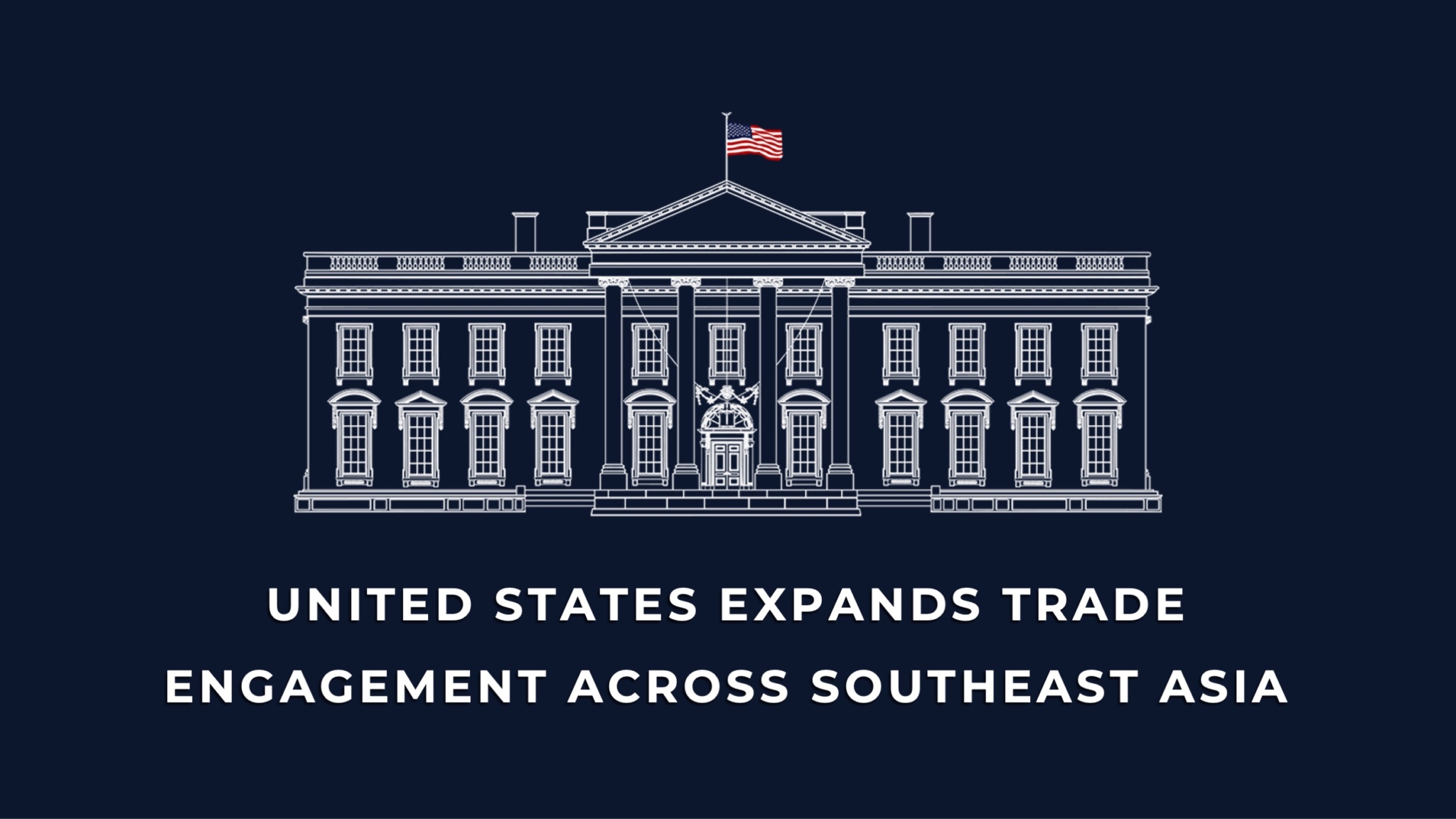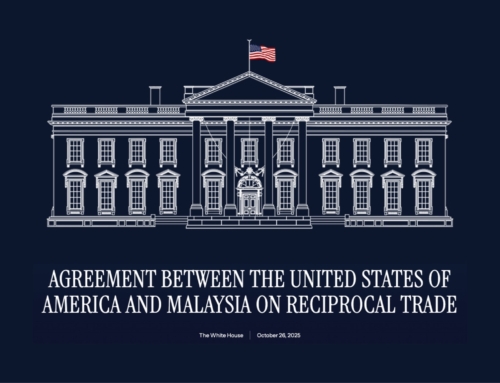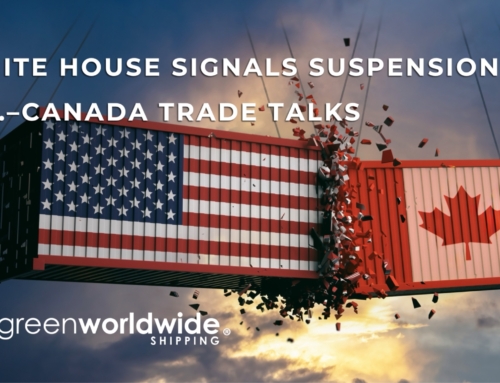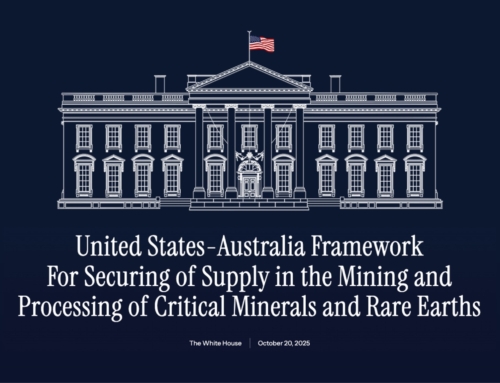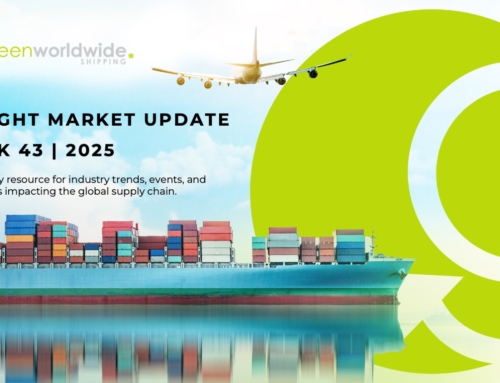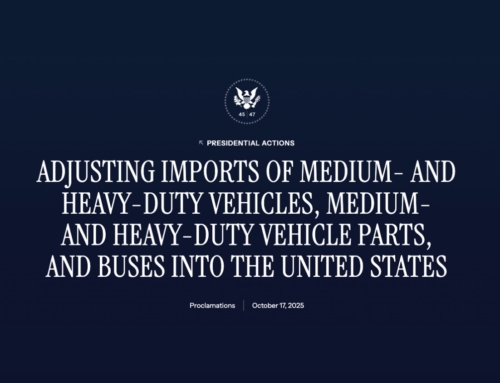On October 26, 2025, the White House announced new trade and investment frameworks with Viet Nam, Malaysia, Cambodia, and Thailand. Each agreement establishes reciprocal tariff structures, expands market access for U.S. exports, and strengthens cooperation in areas such as labor, environmental protection, and digital trade. Collectively, these arrangements reference Executive Orders 14257 and 14346, which provide the regulatory foundation for the United States’ evolving reciprocal tariff policy and broader engagement across Southeast Asia.
WHAT IS THE PURPOSE OF THESE TRADE AGREEMENTS?
Taken together, the agreements outline a coordinated U.S. strategy aimed at promoting transparent, rules-based trade in Southeast Asia. In practical terms, the objectives are to narrow tariff gaps, open larger markets for U.S. industrial and agricultural exports, build secure and diversified critical-minerals supply networks, and increase cooperation on digital trade, investment transparency, and labor and environmental standards consistent with international commitments.
HOW DOES THE U.S.–VIET NAM FRAMEWORK ADVANCE MARKET ACCESS?
The agreement with Viet Nam introduces a 20 percent reciprocal tariff on Vietnamese goods while expanding preferential access for U.S. products across manufacturing, energy, and agriculture. The two governments agreed to reduce non-tariff barriers by accepting U.S. automotive and pharmaceutical standards, simplifying import licensing, and improving conformity-assessment procedures. Beyond tariffs, the framework opens new channels for cooperation on digital trade, intellectual property, and environmental stewardship.Recent commercial developments underscore the scale of bilateral engagement. Vietnam Airlines announced plans to purchase 50 Boeing aircraft, and Vietnamese companies signed import contracts for U.S. agricultural commodities valued at roughly 2.9 billion U.S. dollars.
WHAT ARE THE MAIN ELEMENTS OF THE U.S.–MALAYSIA AGREEMENT?
Malaysia’s trade agreement maintains a 19 percent reciprocal tariff rate and expands market access for U.S. exports in metals, machinery, chemicals, and agriculture. Kuala Lumpur will eliminate or reduce tariffs on most U.S. products while improving regulatory transparency for imported vehicles and food items. A complementary memorandum on critical minerals encourages joint investment in exploration, extraction, and refining projects to strengthen supply-chain resilience. Commercially, Malaysia committed to long-term purchases of U.S. liquefied natural gas worth an estimated 3.4 billion dollars per year, additional telecommunications imports, and an aviation order for 30 Boeing aircraft with an option for 30 more. The two governments also elevated their relationship to a Comprehensive Strategic Partnership, marking a new phase in bilateral cooperation.
HOW DOES THE U.S.–CAMBODIA AGREEMENT DIFFER?
Cambodia has already eliminated tariffs on all U.S. industrial and agricultural imports. The United States, meanwhile, maintains a 19 percent reciprocal tariff on Cambodian exports under Executive Order 14257. Both sides committed to reduce non-tariff barriers through streamlined licensing and recognition of U.S. sanitary and phytosanitary standards. Phnom Penh also pledged stronger enforcement of labor protections, including prohibitions on forced-labor imports, and environmental measures targeting illegal logging, unregulated fishing, and wildlife trade. Cooperation extends to digital trade, intellectual-property enforcement, customs modernization, and investment transparency. A notable commercial partnership pairs Air Cambodia with Boeing to support aviation-sector development and fleet renewal, reflecting broader economic alignment under the new agreement.
WHAT DOES THE U.S.–THAILAND FRAMEWORK INCLUDE?
Thailand’s trade framework phases out tariffs on approximately 99 percent of U.S. industrial and agricultural goods, while the United States keeps a 19 percent reciprocal rate. Bangkok will recognize U.S. certifications for vehicles and medical devices, grant import permits for ethanol, and align regulations through good-governance principles. The framework also expands cooperation on labor-rights protection and environmental enforcement, particularly in forestry, fisheries, and wildlife management. Intellectual-property enforcement, digital-trade policy, and investment transparency form additional pillars, with Thailand pledging to refrain from digital-services taxes and to support a permanent WTO moratorium on customs duties for electronic transmissions. A parallel memorandum on critical minerals promotes bilateral project review and resource-sector investment. Among the commercial outcomes, Thailand announced agricultural and energy purchases exceeding 8 billion U.S. dollars annually and procurement of 80 Boeing aircraft valued at 18.8 billion U.S. dollars.
HOW DO THE KUALA LUMPUR PEACH ACCORDS SUPPORT REGIONAL STABILITY?
The Kuala Lumpur Peace Accords, witnessed by the United States and Malaysia, reaffirmed a ceasefire between Cambodia and Thailand and created an ASEAN Observer Team to oversee border de-escalation. Both governments agreed to withdraw heavy weapons from contested zones, coordinate humanitarian de-mining, and manage border issues through the Joint Boundary Commission. The declaration further emphasizes transparent communication, renewed diplomatic dialogue, and cooperation against transnational crime.
Stay up-to-date on freight news with Green’s Weekly Freight Market Update by following us on LinkedIn. For continuous updates, make sure to check out our website at greenworldwide.com.

